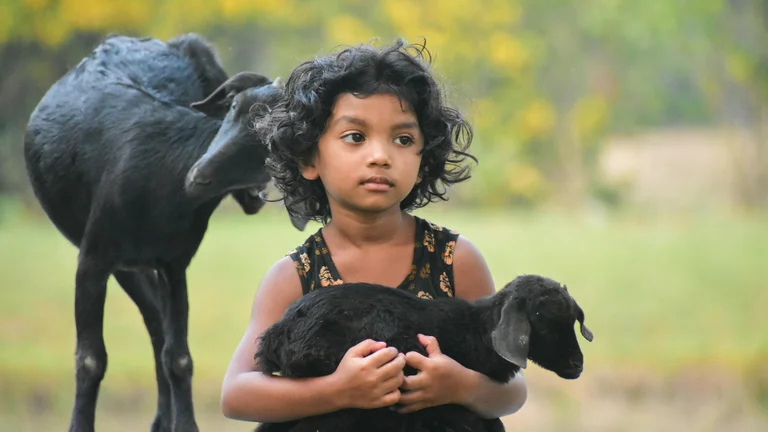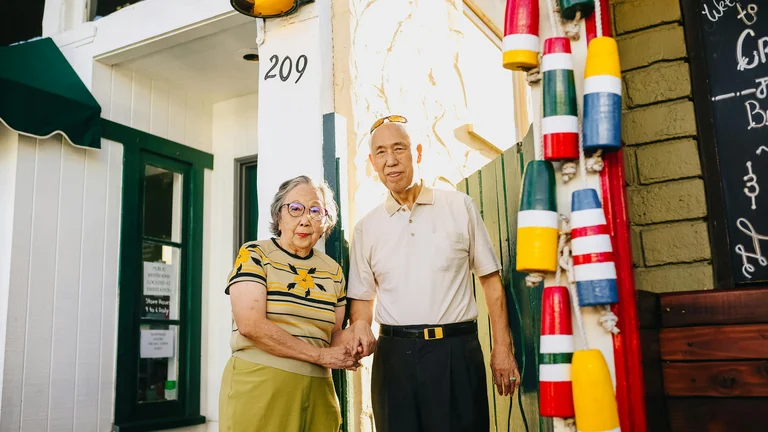
Romantic confessions in K-Dramas hold a distinctive place in the world of television storytelling, particularly known for their emotional depth, cultural nuances, and impact on audiences worldwide. These moments often act as pivotal turning points in series, capturing viewers’ hearts with sincere declarations, dramatic tension, or touching vulnerability. The art of expressing love in Korean dramas goes beyond mere dialogue and involves a complex interplay of character development, cultural context, narrative pacing, and cinematic technique that together create unforgettable scenes.
Central to understanding romantic confessions in K-Dramas is recognizing their dual role as both a narrative device and an emotional milestone. Unlike Western dramas where love declarations might be spontaneous or casual, Korean dramas tend to layer confessions with buildup, hesitation, and subtext, reflecting social attitudes towards romance, especially regarding sincerity and vulnerability. The intention is often to convey not just feelings, but also the courage involved in exposing true emotions, frequently through subtle body language, meaningful silences, and carefully chosen settings. This meticulous crafting of confession scenes results in moments that resonate powerfully with the audience, often becoming iconic within the broader K-Drama canon.
One important facet is the pacing preceding confessions. Many K-Dramas employ a slow burn approach, where long-term character interactions evolve over episodes or even seasons before culminating in a confession. This method emphasizes emotional buildup and gives viewers ample time to engage with the characters’ inner conflicts and growth. The confession itself then serves as a cathartic release — a climax of pent-up emotions finally given voice. This pacing differentiates K-Dramas from other forms of romantic storytelling, where rapid developments might overshadow character depth.
Thematic variations in confessions highlight different dynamics in relationships. Confessions might appear as timid, almost whispered admissions that reflect fear of rejection, or as bold, intense assertions of love that signify a breakthrough in relationship development. The tone can range from joyful and hopeful to melancholic or bittersweet, often tied to the drama's genre blend or plot circumstances. For example, a historical or fantasy K-Drama might frame a confession with poetic language and metaphorical imagery, whereas a contemporary setting might bring a rawer, more realistic tone.
Visual and auditory elements play a profound role in these moments. Directors often use close-up shots, soft lighting, and evocative music to heighten emotional intensity. Silence or minimalistic soundscapes may accompany the confession, underscoring the gravity of the moment. These audiovisual cues contribute significantly to how confessions are perceived and remembered, creating a sensory experience that extends beyond words.
Understanding the cultural context enriches appreciation of romantic confessions in K-Dramas. South Korean society holds specific norms regarding public expressions of affection, humility, and social hierarchy, which influence how characters approach confessing love. For instance, male protagonists may exhibit a protective, earnest demeanor, while female leads often demonstrate vulnerability or subtle hopefulness. The tradition of modesty and indirectness inherited from Korean culture frequently manifests in characters’ hesitation or use of euphemistic language during confessions.
Language serves as a crucial tool in conveying these nuances. Korean has honorifics, formal and informal speech patterns, and specific vocabulary that reflects social relationships, all of which color how a confession is delivered and received. Writers pay careful attention to dialogue, ensuring that the confession aligns with character traits and situational appropriateness. This linguistic layering deepens the emotional texture, making even a simple expression of affection feel layered and potent.
Common Patterns and Variations in Romantic Confessions
K-Dramas share several recognizable patterns in romantic confessions that make these scenes emotionally gripping while maintaining narrative coherence. Typically, confessions are preceded by moments of tension or crisis, where characters confront internal doubts or external obstacles. For instance, a protagonist might wrestle with unspoken feelings amid misunderstandings, family interference, or personal turmoil, making the confession a moment of reckoning.
One pattern involves the confession occurring in a private or semi-private setting, such as a quiet park, a dimly lit room, or during an unexpected encounter. This setting creates intimacy and vulnerability, reinforcing the sincerity of the declaration. Another approach is the public confession, which is less common but impactful when used, signifying bravery or a turning point where characters choose openness over concealment.
Variations include letters, voice messages, or indirect confessions through friends or intermediaries, reflecting modern communication trends and adding layers of complexity. These indirect confessions often build suspense or explore themes like miscommunication or unrequited love. Occasionally, comedic elements arise, where confessions are botched or misunderstood, providing levity while maintaining emotional stakes.
Emotional range in confessions is vast. Some K-Dramas portray joyful acceptance and immediate reciprocation, reinforcing optimistic romantic ideals. Others depict painful rejection, delayed acknowledgement, or tragic timing, offering a more nuanced, bittersweet exploration of love. This spectrum allows for diverse storytelling and emotional resonance with a wide audience demographic.
There is also the phenomenon of the ‘double confession’ trope, where both romantic leads simultaneously reveal their feelings. This synchronized confession intensifies dramatic impact and can mark a decisive moment in the narrative. Writers use such scenes strategically to accelerate plot developments or deepen relational dynamics.
Table: Common Types of Romantic Confessions in K-Dramas
| Type | Description | Common Setting | Emotional Tone |
|---|---|---|---|
| Private Verbal Confession | Direct admission of love in a secluded place | Quiet room, park, rooftop | Intimate, vulnerable, heartfelt |
| Public Declaration | Open confession in a public setting | School courtyard, restaurant, event | Bold, courageous, revealing |
| Letter or Message | Written or recorded confession delivered indirectly | Mailbox, phone message, hidden note | Subtle, suspenseful, tentative |
| Misunderstood Confession | Confession hindered by misunderstanding or humor | Accidental overhearing, comedic mix-up | Lighthearted, awkward, dramatic |
| Simultaneous Confession | Both parties confess feelings at once | Emotional confrontation spots | Intense, hopeful, climactic |
Impact of Romantic Confessions on Character Development
Romantic confessions are frequently pivotal in defining character arcs within K-Dramas. The decision to confess or conceal feelings reveals core aspects of a character’s personality, maturity, and emotional growth. Writers use these moments to transition characters from uncertainty to clarity, often marking a shift in self-awareness or relational dynamics.
For protagonists who initially display emotional guardedness or insecurity, confessions represent breakthroughs that demonstrate increased bravery and authenticity. The process often involves overcoming fears related to rejection, pride, or social standing. Supporting characters, such as best friends or rivals, may influence or respond to the confession, providing additional layers to character relationships and growth trajectories.
Confessions sometimes function as catalysts for role reversals, where characters who once hesitated take assertive control of their romantic narrative. This transformation can highlight themes of empowerment and personal evolution. Conversely, confession scenes may also expose flaws or vulnerabilities that prompt introspection and further development.
The consequences of confession impact plot movement extensively. A successful confession can lead to deepening intimacy and cooperative problem-solving, while rejection might trigger conflict, separation, or self-reflection. These varied outcomes keep the storyline dynamic and emotionally engaging.
Detailed examples illustrate this dynamic well. In dramas like "Goblin" or "Crash Landing on You," confession scenes do not merely express love but reveal character resilience, emotional complexity, and evolving trust. The confessions encourage characters to confront their past traumas, social differences, or personal dilemmas, intricately tying romance to larger narrative themes.
Below is a list of key ways romantic confessions influence character growth:
- Exposure of hidden emotions and true desires
- Testing personal courage and vulnerability
- Shifting power dynamics within relationships
- Initiating conflict resolution or escalation
- Revealing cultural or personal values
- Driving transformative self-discovery
Techniques Used to Execute Effective Romantic Confessions
The success of a romantic confession on screen relies on a blend of writing, directing, acting, and technical elements. Writers craft dialogue that balances authenticity with poetic resonance, ensuring the words feel natural yet significant. In many K-Dramas, the confession involves indirect language, where subtext communicates deeper feelings beyond explicit statements.
Directing choices greatly affect the confession’s impact. Close-ups emphasizing facial expressions, slow camera movements, and editing rhythm dictate the tension and release of the scene. Lighting effects, such as soft glows or shadow play, create mood and intimacy.
Music scores underpin emotional layers. Often, original soundtracks (OSTs) feature swelling melodies or minimalist tunes synchronized with confession scenes to amplify emotional engagement. These compositions may become iconic, referenced repeatedly in promotional materials and fan culture.
Acting performances carry the emotional weight. Skilled actors use nuanced eye contact, subtle gestures, pauses, and shifts in vocal tone to convey complexity. Even silence or avoidance has narrative significance, implying internal struggle or suppressed feelings.
Stage settings are crafted purposefully to complement the confession theme. Natural environments like rain-soaked streets or cherry blossom gardens evoke romantic symbolism, while urban nightscapes suggest modernity and intimacy. The interplay between environment and confession dialogue enriches viewer experience, making scenes visually and emotionally memorable.
Step-by-step breakdown of a typical effective romantic confession scene:
- Setup: Characters face emotional or relational tension that primes confession.
- Build-up: Subtle cues (glances, hesitation) establish atmosphere and expectation.
- Approach: One character initiates confession, often nervously or cautiously.
- Declaration: The core verbal or non-verbal admission of feelings occurs.
- Reaction: The recipient responds, affirming, rejecting, or hesitating.
- Resolution: Scene concludes with emotional aftermath — closeness, separation, or unresolved tension.
Cultural Significance and Audience Reception
Romantic confessions in K-Dramas resonate strongly across domestic and international audiences because they tap into universal emotions while portraying culturally specific nuances. South Korean viewers identify with the social codes influencing confessions, such as respect for emotional restraint, family expectations, and honorific communication, while global audiences often experience these scenes as fresh, poignant expressions of love.
Audience reaction to confession scenes is measurable in both social media engagement and viewer ratings. Dramatic confession scenes frequently trend on platforms like Twitter, Instagram, and TikTok, leading to widespread discussions and fan art. The emotional catharsis these scenes provide creates lasting viewer attachment to characters and series.
Cross-cultural appeal also arises from relatable themes: fear of rejection, hope for acceptance, and courage to be vulnerable. These themes are executed with a combination of melodrama and realism, combining emotional intensity with authentic human experiences.
Fan participation sometimes influences the evolution of confession tropes. Fans may request specific types of confessions or enact role-playing scenarios that mimic legendary K-Drama moments. This interactive dynamic between creators and audiences further elevates the importance of confessions in the genre.
Statistics and Trends in K-Drama Romantic Confessions
Recent studies analyzing K-Drama scripts and viewer behavior demonstrate notable trends in romantic confession patterns. According to a 2022 survey by a Korean media research group, approximately 78% of top-rated K-Dramas feature at least one major romantic confession episode, marking it as a staple narrative device. Confessions tend to happen around episode 8 to 12 in a typical 16-20 episode series, correlating with mid-series climax points.
Data from streaming platforms like Netflix indicates that series with well-executed romantic confessions experience a noticeable spike in viewership and social media activity immediately following confession episodes. This pattern underscores the importance of confession scenes in viewer retention and emotional engagement.
There is also a trend toward diversifying confession scenarios beyond traditional gender roles. An increasing number of K-Dramas showcase female leads initiating heartfelt confessions or depict same-sex romantic confessions, reflecting broader societal changes and audience openness.
Table: Statistical Overview of Romantic Confession Trends in K-Dramas
| Aspect | Percentage/Value | Notes |
|---|---|---|
| Series Featuring Major Confession | 78% | Among top 50 rated K-Dramas in 2020-2023 |
| Average Episode of Confession | 9.5 | In 16-episode series |
| Viewership Increase Post-Confession | 15-20% | Measured on Netflix and Viki platforms |
| Female-Initiated Confessions | Approx. 30% | Rising in recent years |
| Same-Sex Confessions Featured | 5% | Emerging representation |
Practical Guide to Replicating K-Drama Romantic Confession Styles
For creators or fans inspired to craft their own romantic confession scenes in the style of K-Dramas, several key principles and techniques should be considered to achieve authenticity and emotional resonance. Understanding the cultural and cinematic elements that define these moments is fundamental.
First, establish a credible emotional buildup. Avoid rushing into the confession without developing the relationship gradually. Use a mix of tension, moments of closeness, and subtle signals of interest. These lay the groundwork for believable and impactful confessions.
Focus on natural yet meaningful dialogue. K-Drama confessions often blend straightforward phrases with poetic or metaphorical language, capturing both clarity and emotional nuance. Avoid clichés or overly dramatic statements unless they fit the story’s tone.
Consider the physical setting carefully. Select locations that enhance intimacy, symbolism, or thematic relevance. Even a simple setting like a rainy street or a quiet rooftop can gain emotional weight through context.
Direct the scene with an emphasis on body language and non-verbal communication. Eye contact, hesitant gestures, or avoidance can amplify the spoken words, creating multi-layered meaning.
Use music and sound judiciously. Effective music cues can elevate emotional tension, while silence at key moments can render confessions more poignant. Timing the confession with music swells or breaks enhances viewer immersion.
Steps to craft a K-Drama style romantic confession:
- Develop relationship context and emotional stakes.
- Choose a setting that supports the mood and narrative.
- Script dialogue with balance between honesty and subtlety.
- Plan actor movements and expressions to reflect internal conflict.
- Select appropriate music or silence to underscore the scene.
- Use camera angles focusing on faces and gestures to guide audience perception.
Following these steps helps produce confession scenes that resonate authentically with K-Drama audiences.
FAQ - Romantic Confessions in K-Dramas
Why are romantic confessions so significant in K-Dramas?
Romantic confessions in K-Dramas often mark a crucial emotional and narrative turning point, symbolizing characters’ vulnerability and courage, while deepening audience connection through cultural and cinematic nuances unique to Korean storytelling.
How do cultural norms influence romantic confessions in K-Dramas?
South Korean cultural values around modesty, social hierarchy, and indirect communication profoundly shape confession styles in K-Dramas, resulting in nuanced, often hesitant declarations that emphasize emotional depth and respect.
What are common settings for confessions in K-Dramas?
Typical confession settings include quiet outdoor locations like parks or rooftops, intimate indoor spaces, or occasionally public venues, chosen to reflect intimacy, vulnerability, or boldness relevant to the scene’s emotional tone.
Do confessions always lead to happy endings in K-Dramas?
Not necessarily; confessions can lead to various outcomes including acceptance, misunderstanding, rejection, or continued tension, allowing for complex character development and diverse narrative possibilities.
Can female characters initiate confessions in K-Dramas?
Yes, though traditionally male characters often confess first, there is a growing trend in modern K-Dramas where female leads boldly express their feelings, reflecting evolving social norms and audience preferences.
Romantic confessions in K-Dramas are pivotal emotional and narrative moments characterized by cultural nuance, thoughtful pacing, and cinematic artistry, deeply influencing character development and audience engagement across diverse storylines.
Romantic confessions in K-Dramas represent more than simple declarations of love; they encapsulate complex emotional journeys, cultural specificity, and artistic craftsmanship. These moments are meticulously designed to resonate deeply with viewers, driving character growth and plot momentum. Their rich variations and thoughtful execution continue to captivate audiences globally, highlighting the unique narrative artistry of Korean drama storytelling.






